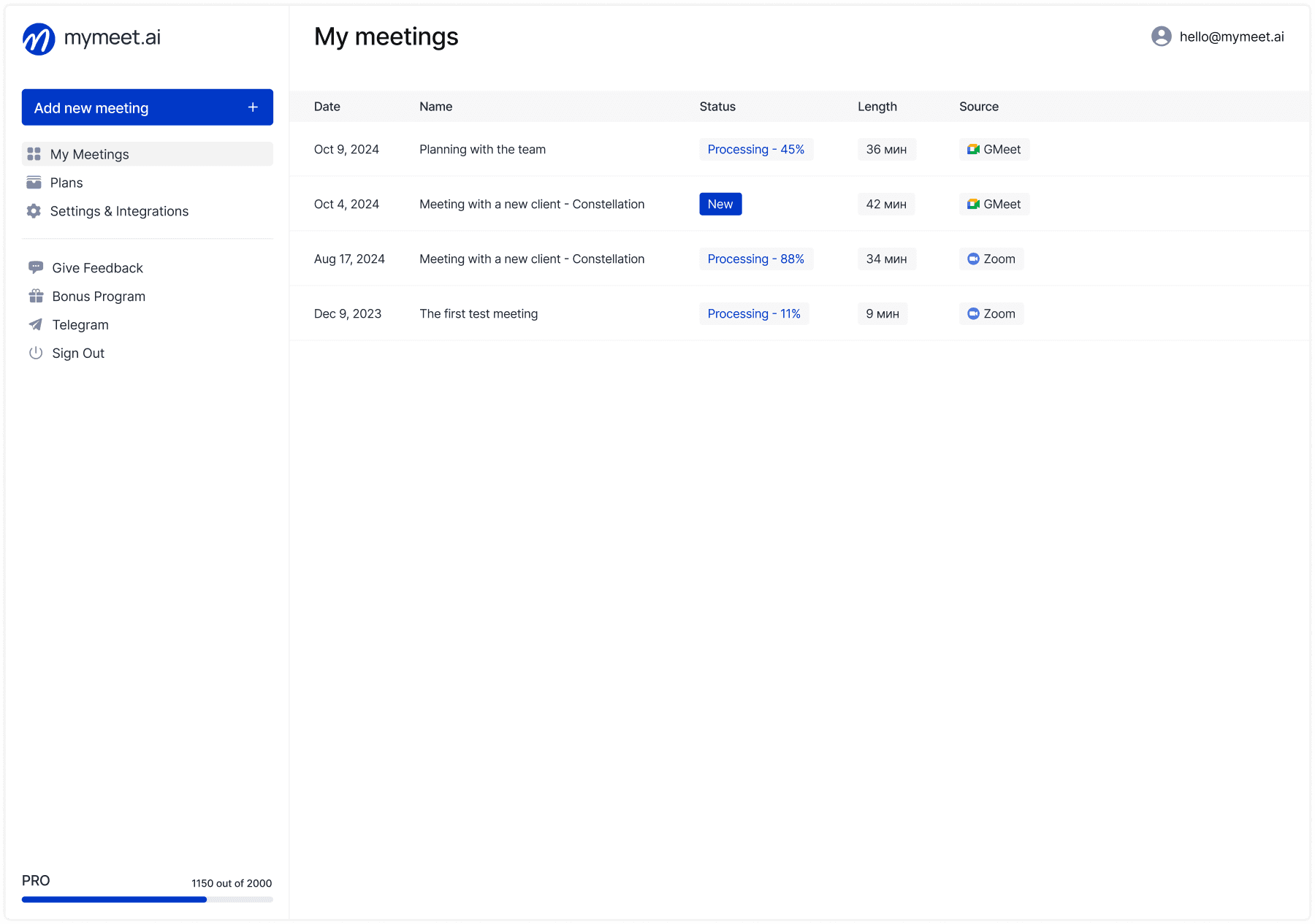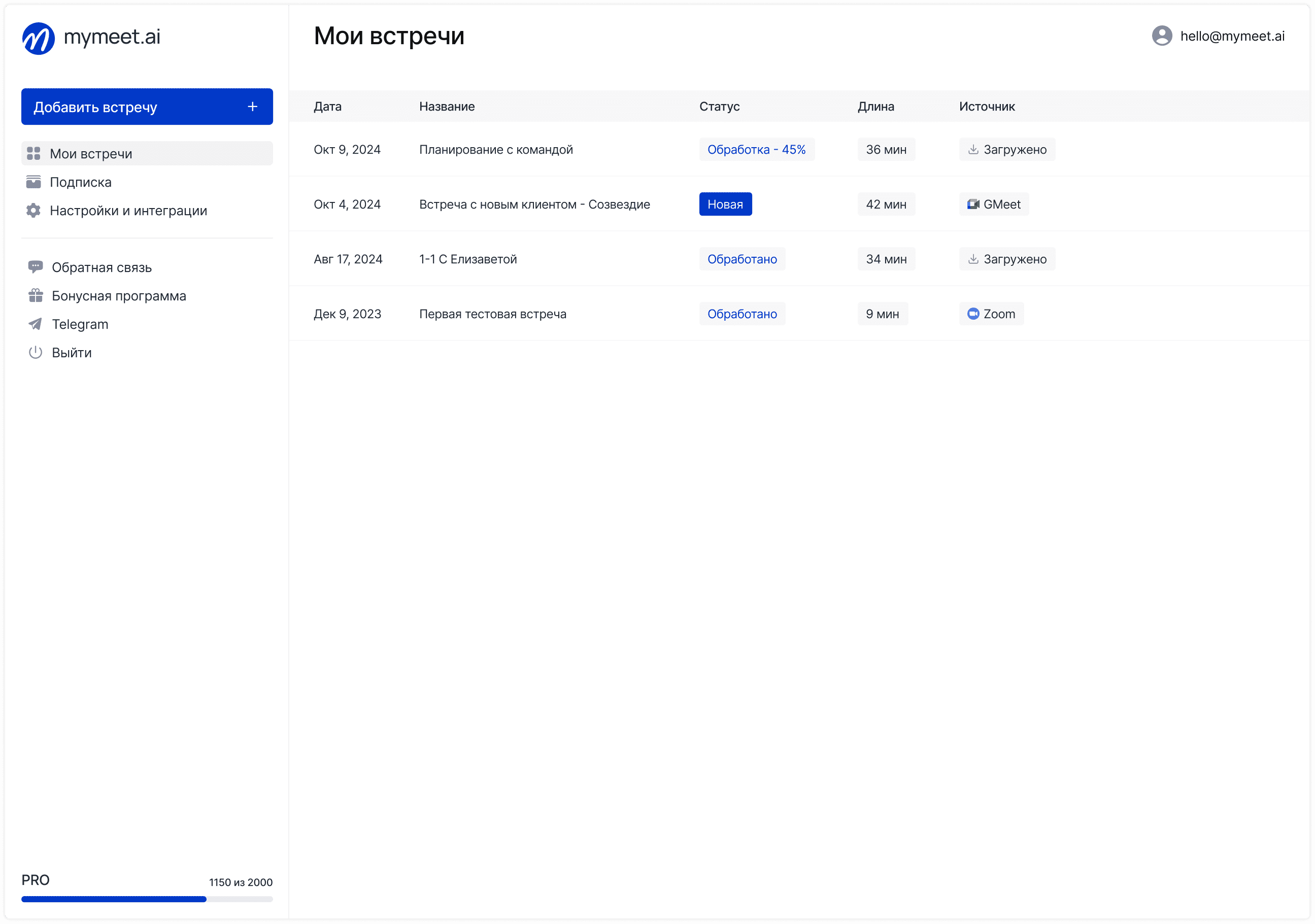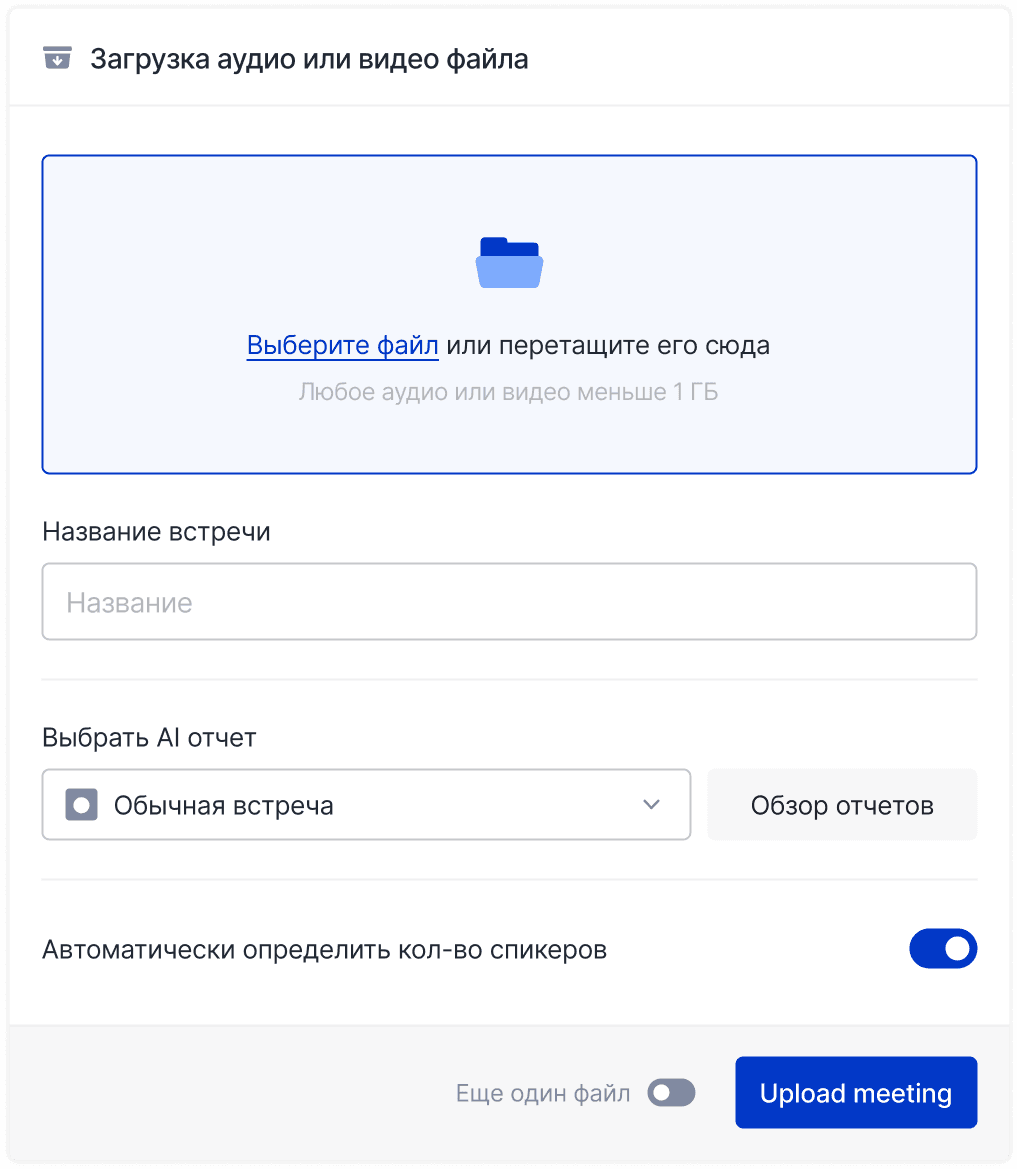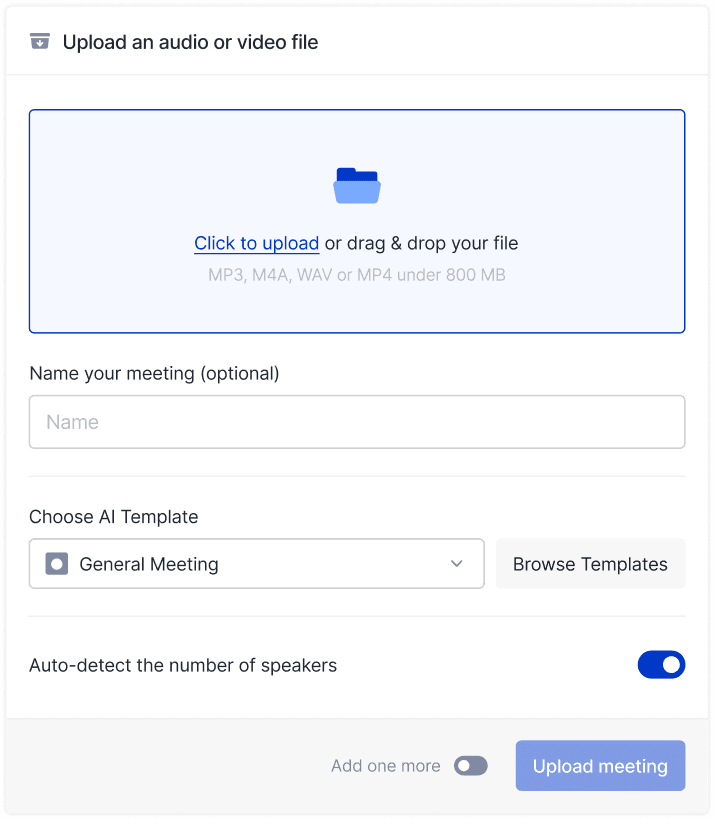Sales Mastery

Andrey Shcherbina
Jul 14, 2025
The CEO of a digital platform faced a problem: the company was spending enormous budgets on advertising, attracting thousands of visitors, but sales were growing slowly. Analysis revealed the absence of a structured sales funnel — potential customers were lost at every stage. After building a well-thought-out funnel with clear stages and constant optimization, conversion tripled and customer acquisition cost halved.
The mymeet.ai team helps global companies analyze and optimize sales funnels using artificial intelligence. A sales funnel represents a systematized approach to converting potential customers into buyers through a sequence of interaction stages.
What is a Sales Funnel
A sales funnel is a visual model of the process of converting potential customers into buyers, showing the number of people at each stage of interaction with the company. The funnel shape reflects the natural narrowing of the audience from a wide circle of interested people to a narrow group of actual buyers.
Definition and Core Principles
A sales funnel describes the customer journey from first brand introduction to making a purchase and further interaction. The model got its "funnel" name due to its characteristic shape: many potential customers at the entrance, and significantly fewer actual buyers at the exit.
Core principles of an effective sales funnel:
Customer-centricity — building the process around customer needs and behavior
Measurability — each stage has clear metrics and performance indicators
Continuity — the process doesn't end with purchase, but includes customer retention
Optimizability — continuous improvement based on data analysis
An effective sales funnel provides a systematic approach to working with customers and allows forecasting sales results based on incoming traffic and stage-to-stage conversions.
Why Business Needs a Sales Funnel
Sales funnels solve key sales process management tasks. They allow structuring chaotic customer interactions into an understandable sequence of stages with measurable results.
Sales process systematization helps identify bottlenecks where potential customers are lost and direct efforts to eliminate them. The funnel provides transparency of the sales process for the entire team and creates a foundation for business scaling.
Planning and forecasting become more accurate thanks to understanding conversions at each stage. Leaders can calculate how many leads need to be attracted to achieve planned sales targets and optimally distribute marketing budgets.
Differences from Other Sales Models
Sales funnels differ from traditional sales approaches through systematicity and focus on long-term customer relationships. Unlike one-time sales techniques, funnels describe the entire customer journey from introduction to purchase.
Classic sales models often focus on the moment of deal completion, while funnels include stages before and after purchase. This allows increasing customer lifetime value through repeat sales and referrals.
Sales funnels involve using different communication channels and content at different stages, while traditional approaches often limit themselves to direct sales. Multi-channel approach ensures more effective interaction with modern buyers.
Sales Funnel Stages
The classic sales funnel includes six main stages, each having specific goals, activities, and performance indicators.
Stage | Main Goal | Key Activities | Average Conversion |
Attraction | Generate awareness | Advertising, content, SEO | 2-5% to leads |
Interest | Obtain contacts | Lead magnets, subscriptions | 10-20% to leads |
Consideration | Demonstrate value | Presentations, demos | 20-40% to opportunities |
Intent | Form need | Consultations, proposals | 15-30% to sales |
Purchase | Complete transaction | Processing, payment | 60-80% completion |
Retention | Repeat sales | Support, upselling | 20-40% repeat purchases |
Attraction and Awareness

The attraction stage aims to create brand or product awareness among the target audience. The main task is to introduce potential customers to the company and form initial interest in the offering.
Effective attraction channels include content marketing, search optimization, contextual and targeted advertising, social networks, and partnership programs. It's important to choose channels where the target audience is active.
Traffic quality at the attraction stage affects the entire funnel's effectiveness. It's better to attract fewer but more relevant visitors than a large number of random people who aren't interested in the product.
Interest and Lead Generation

The interest stage focuses on converting interested visitors into leads — people who left contact information. This is a critically important moment when an anonymous visitor becomes a known potential customer.
Effective lead generation tools:
Lead magnets — free materials in exchange for contacts
Landing pages — specialized pages for conversion
Subscription forms — simple ways to obtain contacts
Webinars and events — educational interaction formats
Free consultations — personal interaction with experts
Lead magnet quality should match audience expectations and solve real potential customer problems. The more value provided for free, the higher the probability of obtaining contact.
Consideration and Evaluation

At the consideration stage, potential customers study the product or service in more detail, compare with alternatives, and evaluate correspondence to their needs. This is a period of forming opinions about the company and offering.
Main activities include providing detailed product information, capability demonstrations, use cases, and customer reviews. It's important to answer potential buyer questions and objections.
Content at this stage should be deeper and more specialized compared to the attraction stage. Potential customers expect expertise and detailed answers to their questions.
Intent and Decision Making

The intent stage is characterized by potential customer readiness to purchase and active search for suitable offering. People at this stage compare conditions, prices, and choose suppliers.
Key activities include personal consultations, individual proposals, product demonstrations, and objection handling. It's important to provide all necessary information for decision making.
Social proof plays an important role at this stage. Customer reviews, recommendations, awards, and certificates help reduce risks and strengthen trust in the company.
Purchase and Conversion

The purchase stage includes all activities related to processing and completing the transaction. The process should be as simple and clear as possible for the customer, without unnecessary obstacles and complications.
Purchase process optimization is critically important for conversion. Each additional field in the order form or extra step can lead to customer loss at the final stage.
Customer support at the purchase stage helps solve arising questions and problems. Quick response to requests significantly increases transaction completion probability.
Retention and Repeat Sales

The retention stage begins immediately after purchase and aims to form long-term customer relationships. Often this stage is overlooked, focusing only on attracting new buyers.
Effective retention includes quality customer support, regular communication, loyalty programs, and additional product or service offers. Satisfied customers become a source of referrals.
The cost of retaining an existing customer is significantly lower than expenses for attracting a new one. Investments in the retention stage pay off through repeat purchases and positive reviews.
Key Sales Funnel Metrics
Measuring sales funnel effectiveness requires focus on key indicators that reflect process health and help identify improvement opportunities.
Stage-to-Stage Conversion Rates
Conversion between funnel stages shows what percentage of people move from one level to the next. These indicators help identify bottlenecks and determine optimization priorities.
Traffic source conversion analysis allows evaluating the effectiveness of different attraction channels. Some sources may generate lots of traffic but with low sales conversion.
Comparing conversions with industry standards helps understand company competitiveness. However, it's important to consider business specifics and not blindly copy others' indicators.
Funnel Progression Speed
Funnel speed shows how quickly potential customers move from first contact to purchase. Accelerating this process increases revenue with the same number of leads entering the funnel.
Time analysis at each stage helps identify places where customers get "stuck" for long periods. Optimizing such stages can significantly accelerate the entire sales process.
Seasonality and external factors affect funnel speed. Understanding these cycles helps plan activities and adjust result expectations.
Customer Acquisition Cost and LTV
Customer acquisition cost (CAC) includes all marketing and sales expenses divided by the number of acquired buyers. Reducing this indicator while maintaining customer quality increases profitability.
Customer lifetime value (LTV) shows total profit from a customer throughout the cooperation period. The LTV to CAC ratio should be at least 3:1 for sustainable business.
Payback period shows how long it takes for customer acquisition investments to start generating profit. Short payback period improves cash flow and allows faster business scaling.
Building a Sales Funnel from Scratch
Creating an effective sales funnel requires a systematic approach that begins with deep target audience analysis and ends with choosing optimal tools for each stage.
Target Audience Analysis and Segmentation
Funnel building begins with detailed target audience study. It's necessary to understand demographic characteristics, behavioral patterns, needs, and pain points of potential customers.
Audience segmentation allows creating personalized funnels for different customer groups. Different segments may require different approaches, communication channels, and content types.
Research includes analyzing existing customers, target audience surveys, competitor study, and website user behavior analysis. Quality data helps create an accurate picture of customer needs.
Stage Design and Touchpoint Planning
Funnel design is based on understanding the customer journey from first brand introduction to purchase. Each stage should logically flow from the previous one and prepare ground for the next.
Key touchpoints in sales funnel:
First introduction — advertising, articles, recommendations
Interest deepening — landing pages, lead magnets, subscriptions
Trust building — case studies, reviews, expert content
Decision making — consultations, demos, personal offers
Purchase completion — cart, order processing, payment
Each touchpoint should provide value to the customer and motivate transition to the next stage. It's important to eliminate unnecessary obstacles and simplify the interaction process.
Channel and Tool Selection
Promotion channel choice depends on target audience characteristics, product features, and available budget. It's important to start with one or two channels and gradually expand presence.
For the B2B segment, professional social networks, industry publications, conferences, and partnership programs are often effective. B2C audiences respond better to social networks, contextual advertising, and content marketing.
Technical tools should ensure customer tracking at all funnel stages. CRM systems, analytics, email marketing, and marketing automation become the foundation of an effective funnel.
Sales Funnel Optimization
Continuous sales funnel optimization ensures conversion growth and customer acquisition cost reduction. The improvement process should be systematic and based on data analysis.
Conversion Increase Methods
Funnel optimization focuses on eliminating obstacles for potential customers and improving user experience at each stage. Even small improvements can yield significant result growth.
Main conversion increase methods:
Form simplification — reducing field and step count
Page loading improvement — website speed optimization
Content personalization — adaptation to user interests
Social proof — reviews, ratings, recommendations
Clear call-to-actions — understandable and motivating buttons
User behavior analysis helps identify places where people leave the funnel. Heat maps, session recordings, and analytics show problem areas for optimization.
A/B Testing and Experiments
A/B testing allows comparing different funnel element variants and choosing the most effective ones. You can test headlines, images, forms, buttons, and entire pages.
Proper test conduct requires statistical significance of results and correct data interpretation. It's important to test only one element at a time to understand conversion change reasons.
Experimentation culture should become part of corporate culture. Regular tests and experiments ensure continuous funnel improvement and market change adaptation.
Automation and Technology
Marketing automation allows scaling personalized communications and ensuring timely interaction with potential customers. Automatic email chains, lead scoring, and segmentation increase funnel effectiveness.
Artificial intelligence opens new optimization opportunities. Customer behavior prediction, content personalization, and automatic advertising optimization become available tools.
Different system integration ensures holistic customer view and their funnel journey. CRM, email marketing, analytics, and automation systems should work as a unified ecosystem.
mymeet.ai for Sales Funnel Analysis

The mymeet.ai platform provides unique opportunities for sales funnel analysis and optimization through automating customer communication work and identifying successful interaction patterns.

Key mymeet.ai capabilities for sales funnel:
✅ Sales meeting and presentation analysis — automatic identification of factors influencing customer decision-making
✅ Pain point and need identification — AI analyzes conversations and determines key customer problems at each stage
✅ Sales script optimization — forming libraries of effective phrases and arguments for different funnel stages

✅ Objection and barrier analysis — identifying typical conversion obstacles and ways to overcome them
✅ Personal team coaching — individual recommendations for improving skills at each funnel stage

✅ Conversion probability forecasting — AI assesses deal closure chances based on communication analysis
✅ Report automation — CRM integration for automatic lead progress data updates
✅ Enterprise-grade security compliance — secure data processing with enterprise-level security standards
TechFlow Digital Case: Digital Agency Funnel Optimization
TechFlow Digital uses mymeet.ai to analyze sales funnel effectiveness. Before implementation, the team spent significant time analyzing client meetings.
AI identified key customer decision-making moments and determined most convincing arguments for different segments. Result: 50 hours monthly saved on interaction analysis, increased presentation conversion, and standardized approaches across the team.
Try to train employees to work with the AI assistant. Submit an application via the form for a corporate webinar.

Common Sales Funnel Mistakes
Understanding typical mistakes helps avoid time and resource losses when building and optimizing sales funnels.
Overly Complex Structure
Many companies create excessively complex funnels with many stages and interaction points. Complexity makes process management difficult and creates additional barriers for customers.
An effective funnel should be as simple and clear as possible for both team and customers. Each stage should have a clear purpose and add value for potential buyers.
Optimal stage count depends on product complexity and decision-making cycle duration. For most businesses, 4-6 main funnel stages are sufficient.
Ignoring Data and Analytics
Building funnels based on assumptions without analyzing real data often leads to low effectiveness. It's important to measure results and make decisions based on actual indicators.
Lack of analytics systems makes funnel optimization impossible. Without conversion data, traffic sources, and user behavior, you can't identify problems and improvement opportunities.
Regular metrics analysis should become a team habit. Weekly funnel performance reviews help quickly respond to changes and adjust strategy.
Lack of Personalization
Universal approach to all potential customers reduces funnel effectiveness. Different audience segments have different needs and prefer different communication methods.
Content and offer personalization significantly increases conversion at all funnel stages. Modern technologies allow automating personalization without quality loss.
Segmentation should be based on behavior, demographic characteristics, and purchase readiness stage. Each segment requires an individual approach and specific content.
Conclusion
Sales funnels become the foundation of effective business in conditions of growing competition. Companies that systematically approach funnel building and optimization gain sustainable competitive advantages.
A successful funnel requires customer understanding, clear process structuring, and continuous data-based optimization. Modern technology integration significantly increases each stage's effectiveness.
Start optimizing your sales funnel today: use mymeet.ai to analyze your customer interactions and identify improvement opportunities for each stage. 180 minutes of free testing will show how AI can help increase your sales funnel effectiveness.
FAQ about Sales Funnel
How many stages should a sales funnel have?
Optimal stage count depends on product complexity and purchase cycle duration. For most businesses, 4-6 stages prove effective. Clear transition criteria between stages are more important than their count.
How to calculate sales funnel conversion?
Conversion is calculated as the ratio of people who moved to the next stage to the total number at the previous stage, multiplied by 100%. Overall funnel conversion is the product of all stage conversions.
Which sales funnel metrics are most important?
Key metrics include stage-to-stage conversions, customer acquisition cost (CAC), lifetime value (LTV), funnel progression speed, and total funnel volume. Focus on metrics that affect business profitability.
How often should you optimize the sales funnel?
Funnel metrics analysis should be conducted weekly, with serious changes monthly or quarterly. Continuous A/B testing helps continuously improve conversion rates.
What's the average sales funnel conversion?
Average conversions vary greatly by industry and business type. For e-commerce, overall conversion is 1-3%, for B2B sales — 2-5%. It's more important to compare with your own historical data.
How to build a sales funnel for a small business?
Start with a simple 4-stage funnel: attraction, interest, decision, purchase. Use free analytics tools, create lead magnets, and set up basic email marketing automation.
What to do if the sales funnel isn't working?
Analyze each stage's metrics, identify places with biggest customer losses. Conduct customer surveys, study their objections, and optimize problem stages through A/B testing.
How to automate the sales funnel?
Use CRM system for customer tracking, set up automatic email chains, implement chatbots for initial qualification, and lead scoring for sales team work prioritization.
What tools are needed for a sales funnel?
Basic set includes web analytics, CRM system, email marketing tools, and landing page builders. For advanced optimization, add A/B testing systems and marketing automation.
How to measure sales funnel effectiveness?
Track stage-to-stage conversions, funnel progression time, customer acquisition cost, and their lifetime value. Compare indicators with previous periods and set improvement goals.
Andrey Shcherbina
Jul 14, 2025








